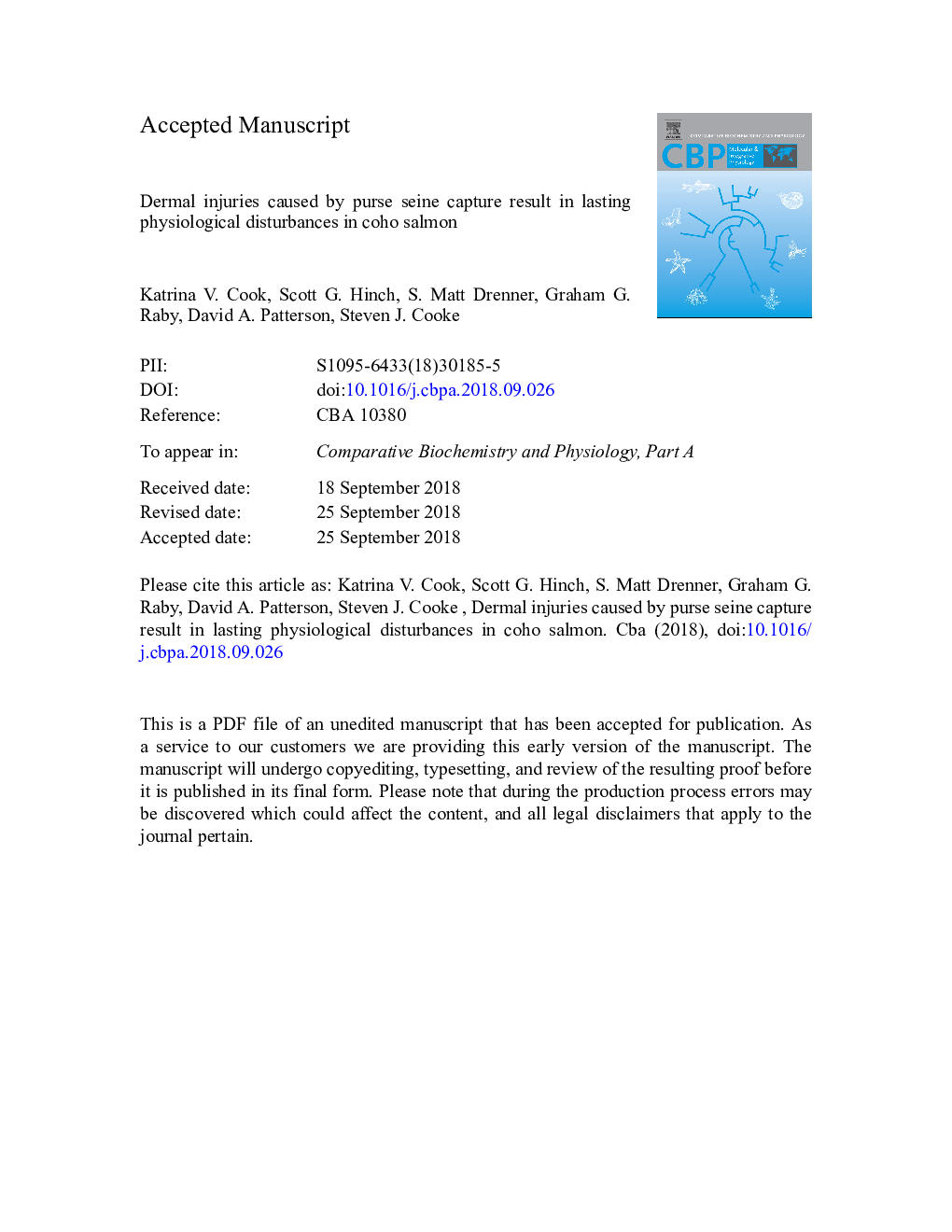| Article ID | Journal | Published Year | Pages | File Type |
|---|---|---|---|---|
| 11026098 | Comparative Biochemistry and Physiology Part A: Molecular & Integrative Physiology | 2019 | 32 Pages |
Abstract
Fish vitality can be measured by classifying reflex impairments (i.e., a visual impression of the ability to respond to induced stimuli) and visible injuries. These metrics can predict survival probability following release from fisheries, and monitoring physiological disturbances following capture can help understand mechanisms of mortality. To test the hypothesis that severity of injury and reflex impairment influences the time course of physiological recovery, coho salmon (Oncorhynchus kisutch) were held for up to 84-h following capture by purse seine. We classified reflex impairments and visible dermal injuries, and through repeated blood sampling, assessed metrics indicative of stress, exhaustion, and osmoregulatory disturbances. Reflex-impairments and blood lactate levels suggested fish were exhausted upon capture but recovered after 48â¯h. Conversely, fish with dermal injuries showed disruptions to ion homeostasis that were greater in more severely injured fish and increased over time. While reflex impairments may predict short term post-release mortality, the prolonged physiological disturbances caused by dermal injuries are likely to be responsible for delayed mortality; our results suggest that disruptions to ion homeostasis is a possible mechanism of post-release mortality.
Related Topics
Life Sciences
Biochemistry, Genetics and Molecular Biology
Biochemistry
Authors
Katrina V. Cook, Scott G. Hinch, S. Matt Drenner, Graham G. Raby, David A. Patterson, Steven J. Cooke,
